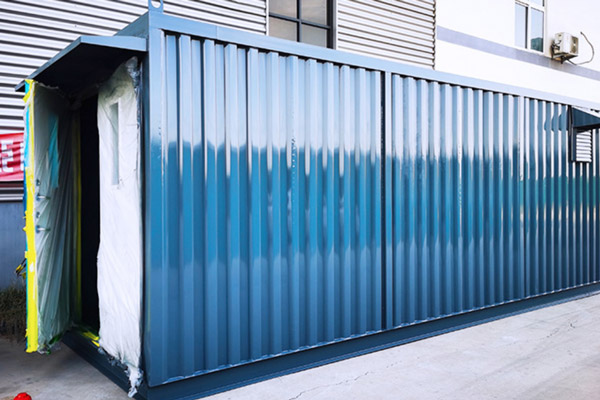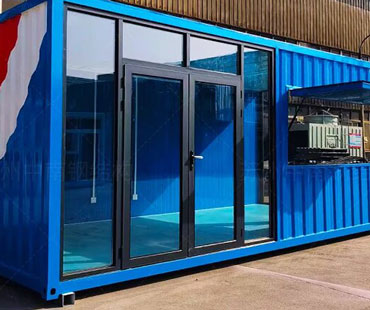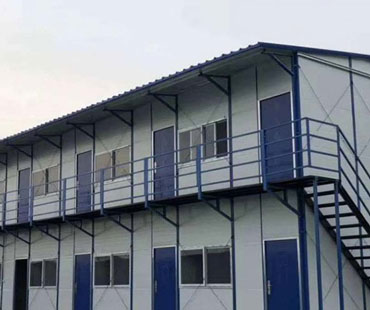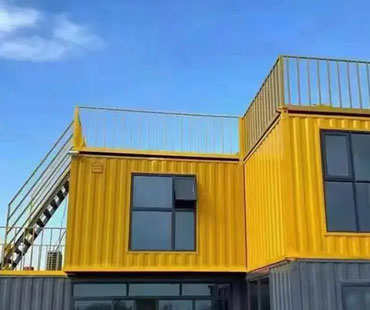Container transportation has revolutionized global trade, transforming the way goods are moved across the world. Since its inception, the containerization system has evolved significantly, driven by technological advancements and changing market demands. Today, it serves as the backbone of international commerce, enabling efficient and cost-effective movement of goods.
The concept of container transportation began in the early 1950s, pioneered by American entrepreneur Malcolm McLean. Frustrated by the inefficiencies of traditional cargo handling methods, which often involved manual loading and unloading, McLean developed the modern shipping container—an intermodal container designed to be easily transferred between ships, trucks, and trains.
The first successful container ship, theSS Ideal X, set sail in 1956, carrying 58 containers from Newark to Houston. This marked the beginning of a new era in shipping, as containers provided a standardized way to transport goods, significantly reducing loading and unloading times and minimizing cargo damage. As ports around the world began to adapt to this new system, containerization rapidly gained traction, leading to the establishment of global supply chains and transforming international trade.
Throughout the late 20th century, container shipping experienced explosive growth. By the 1980s, containerization had become the dominant method of cargo transport, accounting for over 90% of global trade by volume. This growth was fueled by several factors:
1.Economies of Scale: Larger container ships allowed for the transportation of vast quantities of goods at lower costs. The emergence of mega-container vessels, capable of carrying over 20,000 TEUs (twenty-foot equivalent units), further enhanced shipping efficiency.
2.Technological Advancements: Innovations in logistics and supply chain management, such as the use of GPS tracking and automated systems, have streamlined operations and improved the overall efficiency of container transportation.
3.Globalization: As trade barriers fell and globalization accelerated, the demand for efficient shipping solutions surged. Container shipping became essential for facilitating the movement of goods between manufacturers and consumers across the globe.

Today, container transportation is an integral part of the global economy, with thousands of container ships operating in international waters and numerous ports equipped to handle container traffic. Major shipping lines, such as Maersk, MSC, and CMACGM, dominate the market, providing services that connect manufacturers and consumers across continents. The current landscape of container transportation is characterized by several key features:
1.Intermodal Connectivity: The ability to seamlessly transfer containers between ships, trucks, and trains has become a hallmark of modern logistics. Intermodal transport allows for more efficient supply chains, reducing transit times and costs while increasing flexibility in how goods are transported.
2.Advanced Port Infrastructure: Ports have evolved into sophisticated logistics hubs equipped with state-of-the-art technology, including automated cranes, real-time tracking systems, and digitized customs processes. These advancements enhance cargo handling efficiency and reduce bottlenecks, enabling ports to accommodate the larger vessels that dominate today's shipping fleet.
3.Environmental Concerns: As the shipping industry has grown, so too have concerns about its environmental impact. Container shipping is responsible for a significant portion of global greenhouse gas emissions. In response, the industry is increasingly focused on sustainability initiatives, including the adoption of cleaner fuels, energy-efficient vessels, and practices aimed at reducing emissions.
The future of container transportation is poised for further transformation, driven by technological innovation and changing global dynamics. Several trends are expected to shape the industry in the coming years:
1.Digitalization and Automation: The integration of digital technologies is set to revolutionize container transportation. Technologies such as blockchain, artificial intelligence (AI), and the Internet of Things (IoT) are being increasingly adopted to enhance transparency, improve tracking, and streamline operations. Automated container handling systems and autonomous ships are also on the horizon, which could further reduce labor costs and improve efficiency.
2.Sustainability Initiatives: With growing pressure to address climate change, the shipping industry is committing to reducing its carbon footprint. The International Maritime Organization (IMO) has set ambitious targets to halve greenhouse gas emissions by 2050, prompting shipping companies to invest in alternative fuels, such as liquefied natural gas (LNG) and hydrogen, as well as renewable energy sources.
3.Resilience and Supply Chain Diversification: The COVID-19 pandemic highlighted vulnerabilities in global supply chains, leading to calls for more resilient and diversified logistics strategies. Companies are increasingly looking to diversify their sourcing and shipping routes, reducing reliance on any single region or mode of transport. This trend is likely to result in increased investment in regional manufacturing and logistics hubs.
4.E-commerce and Last-Mile Delivery: The rise of e-commerce has changed consumer expectations around shipping speed andefficiency. As consumers increasingly demand faster delivery times, container transportation is adapting to meet these new challenges. The integration of last-mile delivery solutions, including partnerships with local logistics providers and the use of advanced technologies like drones and electric vehicles, will play a crucial role in fulfilling e-commerce orders efficiently.
5.Regional Trade Agreements: As geopolitical dynamics shift, new regional trade agreements may reshape container shipping routes and patterns. Trade agreements can lead to increased trade flows between specific regions, prompting shipping companies to adjust their services and capacity to meet changing demands.
6.Enhanced Security Measures: With the rise in global trade, concerns over security—both physical and cyber—are paramount. The industry is likely to see advancements in security technologies, such as blockchain for secure transactions and IoT devices for real-time monitoring of shipments, to safeguard cargo from theft and tampering.
7.Smart Ports: The concept of "smart ports" is gaining traction, where ports leverage data analytics and IoT to optimize operations. These ports will utilize real-time data to improve scheduling, reduce congestion, and enhance the overall flow of goods. This approach will not only increase efficiency but also minimize environmental impact through better resource management.
Container transportation has come a long way since its inception, evolving into a vital component of global trade that facilitates the movement of goods across vast distances. As we look to the future, the industry is poised for significant changes driven by technological advancements, sustainability initiatives, and the need for resilience in supply chains.
The continued evolution of container transportation will not only impact shipping companies and logistics providers but also manufacturers, retailers, and consumers worldwide. By embracing innovation and adapting to emerging trends, the container shipping industry can navigate the challenges ahead and continue to serve as the backbone of global trade for years to come.


